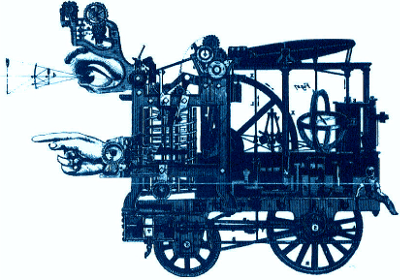 |
Network PerformanceIn this unit, we study the fundamental concepts and analytical tools for modelling, predicting and improving the performance of telecommunication networks. We particularly pay attention to modern packet switched network architectures. We also introduce discrete-event simulation methods in the unit's laboratory exercises.We use Monash University's MoVE environment. You can also use your own computer if you install the required software (we use freely available software packages only). |
Program and Resources
Fundamental concepts and networking technologies: Network performance modeling principles, a comparison of network architectures
A. Kumar, D. Manjunath, and J. Kuri, Communication Networking: An Analytical Approach, Chapter 1 - Introduction: Two Examples (see my note on Markov chain representation of the 2X2 switch)
A. Kumar, D. Manjunath, and J. Kuri, Communication Networking: An Analytical Approach, Chapter 2 - Networking: Functional Elements and Current Practice
Internetwork traffic management: Packet switch architectures, scheduling, QoS and performance guarantees
A. Tanenbaum, Computer Networks, 5th Edition, Chapter 5 The Network Layer (Sections 5.4.1 to 5.4.4)
L. Peterson and B. Davie, Computer Networks: A Systems Approach, Chapter 6: Congestion Control and Resource Allocation (Sections 6.1, 6.2 and 6.5.1 to 6.5.3)
P. L. Dordal, An Introduction to Computer Networks, Chapter 19: Queueing and Scheduling (Sections 19.1 to 19.9)
Queueing theory concepts for delay and loss analysis in telecommunication networks
K. Stordahl, The History Behind the Probability Theory and the Queueing Theory
H. Pishro-Nik, Introduction to Probability, Statistics and Random Processes
C. M. Grinstead and J. L. Snell, Introduction to Probability
S. Keshav, Mathematical Foundations of Computer Networking, Chapter 6: Stochastic Processes and Queueing Theory
W. Stallings, Queueing Analysis
End-system traffic management: Error, flow and congestion control
L. Peterson and B. Davie, Computer Networks: A Systems Approach, Chapter 6: Congestion Control and Resource Allocation (Sections 6.3 and 6.4)
Discrete event simulation techniques for modeling telecommunication networks
G. Bernstein, Basic Network Simulations and Beyond in Python
Team SimPy, SimPy: Discrete Event Simulation for Python
